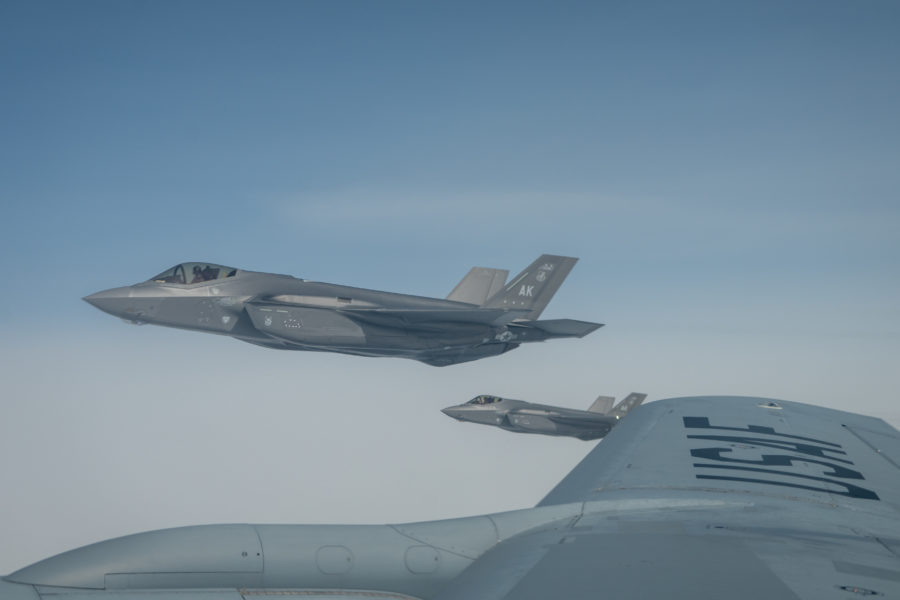Two U.S. Air Force F-35s intercepted a quartet of Russian fighters and bombers near Alaska on Feb. 14—the second intercept in two days.
North American Aerospace Defense Command (NORAD) said the Russian flight, which included Tu-95 Bear-H strategic bombers and Su-35 and Su-30 fighters, approached the Alaska Air Defense Identification Zone, but did not penetrate into American or Canadian airspace.
Two F-35s were dispatched to intercept the Russian planes, supported by two F-16 fighters, an E-3 Sentry airborne warning and control system, and two KC-135 Stratotanker refuelers.
NORAD said the Russian aircraft never entered American or Canadian airspace.
The incident followed was very similar to the Feb. 13 intercept of four Russian aircraft—two Tu-95 Bear-Hs and two Su-35s—by two F-16s, also in the Alaska ADIZ, an warning zone that includes international airspace.
The two intercept missions followed the recent shoot-down of a Chinese surveillance balloon and the shootdowns of other undefined objects by NORAD and U.S. Northern Command. The NORAD statement dismissed any connection between the incidents, noting that “this Russian activity near the North American ADIZ occurs regularly and is not seen as a threat, nor is the activity seen as provocative.”
As with the Feb. 13 incident, NORAD said its forces “anticipated this Russian activity and, as a result of our planning, was prepared to intercept it.” It was unclear whether that was intended to mean NORAD had advance intelligence of specific Russian actions.
The back-to-back Russian intercepts were the first since October, when Russia flew two Bear-H bombers into the ADIZ and were soon intercepted by American F-16s.
U.S. intercepts of Russian aircraft were commonplace during the Cold War, but largely disappeared in the 1990s. In 2007, Russian President Vladimir Putin resumed long-range bomber flights, and NORAD intercepts of those aircraft have occurred with varying frequency since then.
NORAD said it intercepts Russian aircraft six or seven times a year, but that total has reached as high as 15 since 2007.
The Chinese balloon incursion spurred concern over NORAD’s readiness, which was amplified when NORAD Commander Gen. Glen D. VanHerck blamed a “domain awareness gap” for allowing NORAD to be surprised by the Chinese spy balloon.
Some of those concerns, however, has been tamped down by the White House’s recent indications that the three most recent unidentified objects shot down were likely “benign.”
